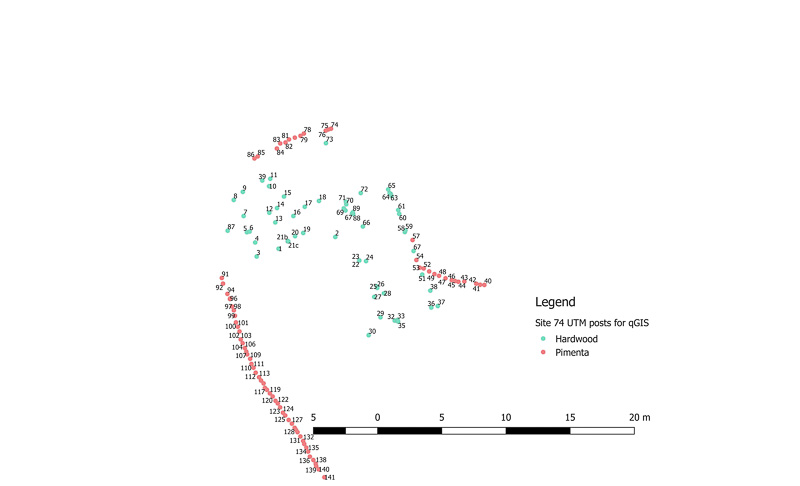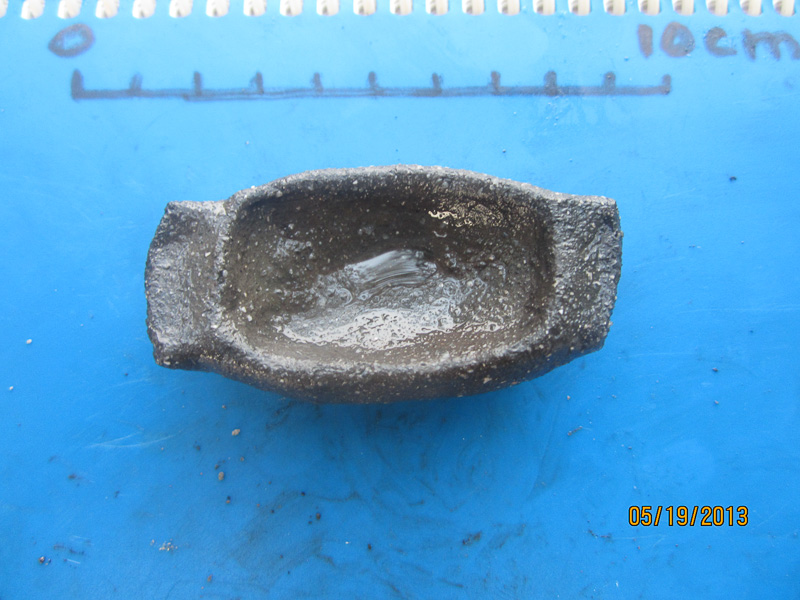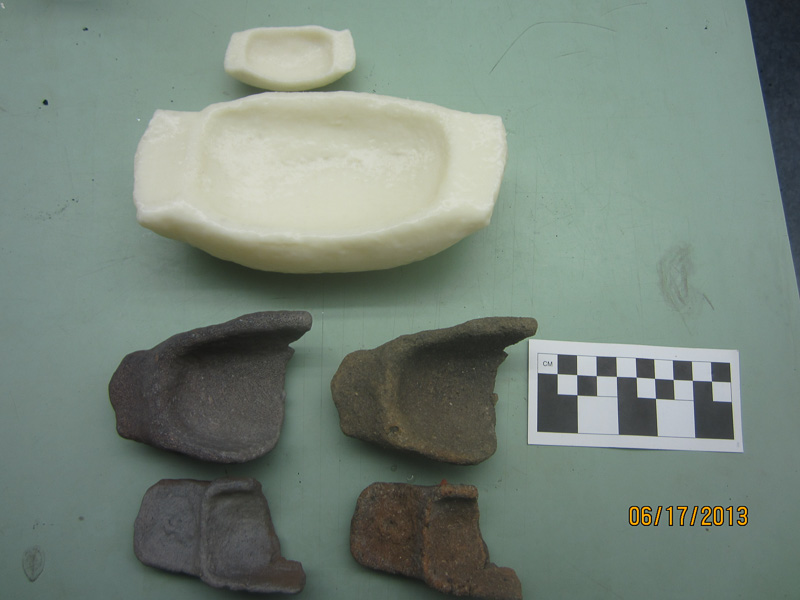


The GIS map shows the location of wooden posts that we marked with red survey flags. Paynes Creek Salt Work 74 has two wooden structures, clearly indicated by the footprint of dots you see on the map.The green dots mark the location of hardwood posts. the red dots mark the location of palmetto palm posts. The post numbers were marked in Sharpie on the flags and recorded during total station mapping. In the field we used the GIS Geomedia by Intergraph (now Hexagon). The data were easily tranferred to the open-source GIS, QGIS as shown on the map. We also mapped the locations of artifacts during survey. We subsequently did underwater transect excavations to look for activities inside and outside buildings, so watch for updates to this web page.

The canoe model made from clay discovered at PCSW 74 resembles other canoe models we found at other Paynes Creek sites, as well as examples carved from manatee rib bones from Moho Cay (see Publications on the main page footer for articles). We photographed the canoe model and then put it in a zip-lock bag full of water. We found that the pottery from the underwater sites was saturated with salt water. If we let the ceramics dry, the salt moved to the surface, expanded, and cracked the surface of the artifacts, destroying them.
The canoe model was kept in a bag of water, transported to our field camp, and 3D scanned at the field lab, powered by a generator. The canoe model was scanned by former MA and PhD student, now Dr. Cory Sills, Assistant Professor at the University of Texas at Tyler. She created this movie clip of the 3D scan on the computer. As you can see, we can manipulate the size and rotate the object. We also saved it as an "stl" file, so watch for a 3D image, coming soon! Waterlogged wood and salt-saturated pottery from the Paynes Creek Salt Works decay on exposure to the air, so we keep them in bags of water until the finds can be studied at our base camp or at a temporary "Lagoon Lab" set up near an underwater site. Selected artifacts are 3D imaged at our base camp and then cached in GPS-marked locations in deep silt in the lagoon where they are preserved for the future.

We take the 3D scan files back to the DIVA Lab at LSU for study and make 3D prints of some objects for display or teaching. The canoe model from PCSW 74 was printed at actual size and also larger so that it could be more easily viewed in a display case. The canoe models were printed on a Dimension Elite 3D printer with ABS+ plastic and then painted (after this photo was taken). We later printed the canoe model in the DIVA Lab using our Projet 460 color printer, that produces a color 3D object made from gypsum powder.